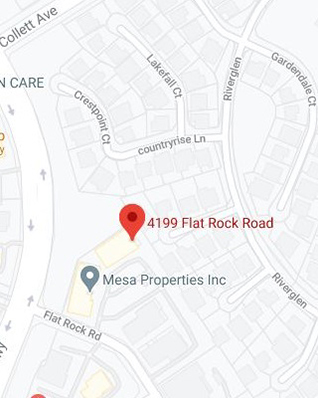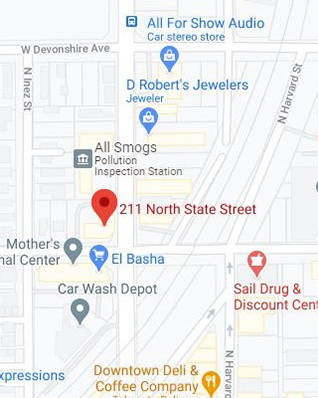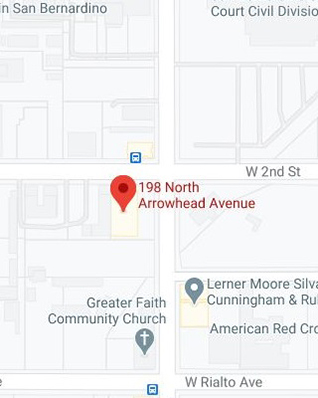
My Green Card Application Was Rejected Because I Have An Old Case At Immigration Court. Can I Fix This Situation?
Question:
“My daughter filed papers to help me obtain permanent residence. When we went to the interview, our paperwork to adjust status was rejected. The officer said I was in deportation proceedings and only the judge could make a decision to grant or deny my green card application. I have not been to immigration court for more than 25 years. I was fighting an appeal over Agricultural Worker documents, so my case was closed. I don’t understand what is going on. What should I do?”
(Submitted by Jonathan C., Twenty Nine Palms, California)
Answer:
Your situation is not easily explained. But there are a few clues about what might have happened.
When you say that your case was closed 25 years ago, it sounds like the immigration judge felt there were other issues which you and the government should handle before going forward with your case at court.
The judge may have thought there was a chance those matters would help you obtain immigration papers to live legally in the United States.
This does not mean your case was closed forever.
So what really happened 25 years ago?
Here is what I think might have happened.
To begin, if you won your other case, then you would not have to return to see the judge again.
But if you had lost your other case, the government could file new papers at the immigration court to start your deportation over again. I assume the officer who interviewed you and your daughter would have told you that you have an existing deporation order.
Thus, I think your case ended through a procedure known as “administrative closure”.
What Is Administrative Closure?
Administrative Closure is a procedure where the immgiration judge “suspends” – that is, “puts on hold” – your case temporarily. It does not resolve your case. Rather, it stops your case until a specific incident or condition occurs.
Technically, your court case is still open but not active. If the required incident does not take place or the condition is not fulfilled, your case can be reopened and started again. Either the immigrant or the government can make such a request.
For instance, when the immigration court grants a request for prosecutorial discretion, it is often based, at least in part, on the immigrant having a potentially viable path to green card success in the future.
Administrative Closure vs
Termination Or Dismissal
Actually, there are three different ways that your case may have been ended. In addition to administrative closure, the others are known as termination and dismissal.
They often confuse immigrants because each of these procedures “ends” immigrantion cases. However, they have distinct consequences.
Termination – Under this procedure, your case is put in a status of temporary abeyance. Your case is taken off the court’s docket entirely. No longer do you have to worry about going to court and fighting deportation charges. However, the government could bring a new case upon you, and force you to defend yourself against removal on the grounds of new allegations.
The Supreme Court’s rulings in Pereira v. Sessions and Niz-Chavez v. Garland is an example of why a decision to terminate a case may be issued. A Notice To Appear, without listing time and place of an immigrant’s deportation hearing, was not effective to commence proceedings. Soon after the Pereira and Niz-Chavez decisions, based on defective NTAs, many immigrants sought to terminate their hearings.
Dismissal – This ends the case against you permanently. It means the government is no longer trying to deport you. In the court’s view, a dismissal is a determination that your case does not warrant further examination. This often happens because the court does not think the government has sufficient evidence to support its charges.
A Sad Legacy: Problems With The Special Agricultural Worker Program
Also, you said that at the time of your immigration court hearing, you were fighting an appeal over your agricultural worker application.
This was fairly common in the late 1990s and early 2000. Such skirmishes were related to an immigration initiative known as the Special Agricultural Worker (SAW) program, which became law under President Reagan.
Unfortunately, there were many legal fights between the government and immigrant lawyers over various aspects of the program – especially over evidence showing that immigrants had worked the required amount of days performing agricultural labor.
If successful, immigrants could qualify for permanent residence. The government challenged the vast majority of applications.
Many legitimate applications were denied.
(Of course, there were immigration fraud con artists who took advantage of and misguided unsuspecting immigants.)

BATARA IMMIGRATION LAW INSIGHTS
EOIR Motions To Reopen vs Motions To Reconsider: A Second Chance To Win At Immigration Court
Since you are not a permanent resident today, I suspect you lost your SAW appeal.
If my assumption is correct, I perceive two different possibilities.
On the one hand, if your case had been administratively closed, the government may have tried to reopen your case at immigration court.
For the case to start over again, the government had to give you notice, called an Order To Show Cause in those days, that you had to return to court to start your case over again.
Based on your surprise at the recent interview at the U.S. Citizenship And Immigration Services (USCIS) office, it seems you were never notified about new hearing dates.
If the government could not prove they served you with papers for the new court hearing, the judge would not take any actions against you.
In fact, if the government had flled charges against you, that were then dismissed because you were not properly served, I assume the USCIS agent would have mentioned such details to you.
Here’s another possibility.
Maybe the government office handling your court case never learned that you lost your appeal. After the judge closed your case, they likely put your office file away. It was probably not looked at again by the government trial lawyers.
Back in 1990s and early 2000s, there was often terrible communications between different government offices – even today the problem still lingers.
So it would not have been uncommon for one government agency handling your SAW appeal to fail to inform the other agency handling your court hearings.
These are just hunches. To figure out what really happened, you’ll need to do background investigation.
Here are two ways.
Whichever approach you take, I don’t think you should do this on your own. Since you don’t know your true situation at immigration court, you should hire a lawyer experienced in complex deportation cases to obtain and study your immigration records.
(In addition, like most immigrants, you’re probably not able to understand a lot of the materials you’ll have to read and analyze.)
First, you can make a request at immigration court to review your file. Since your hearing took place long ago, it will take several weeks for the clerks to retrieve your file.
Most likely, you will need to go to the court . . . not only read all the papers in the judge’s file, but also listen to cassette tapes, often with poor sound quality, used in hearings two decades ago.
Second, you could request your entire immigration file from the government. This will also take a few months. It usually takes longer than retrieving your old file from the immigration court.
There is a big advantage to this second approach. You will obtain documents from more than just your court file. You will also get copies of your old immigration papers and copies of your SAW appeal and the decision, if any, explaining why you lost your appeal.
Once you have such documents, you’ll be in a far better position to figure out what steps you should take next.
It’s almost always better to step back in situations like yours and get the information you need to make an informed decision – and not just charge forward in the dark.
No matter what you learn, you will probably need to deal with either the immigration court, the U.S. Citizenship And Immigration Services, or both.
Again, to be on the safe side, I suggest you find an immigration lawyer who can work with you to correct any errors that may have occurred.
If you have an ongoing case right now, and you have immediate case-specific questions, you may want to visit our Green Cards And Permanent Residence Attorney Services page for more information.
Or you might want to schedule a 1-On-1 Personalized Strategy And Planning Session to discuss the ins and outs of your case in depth.





